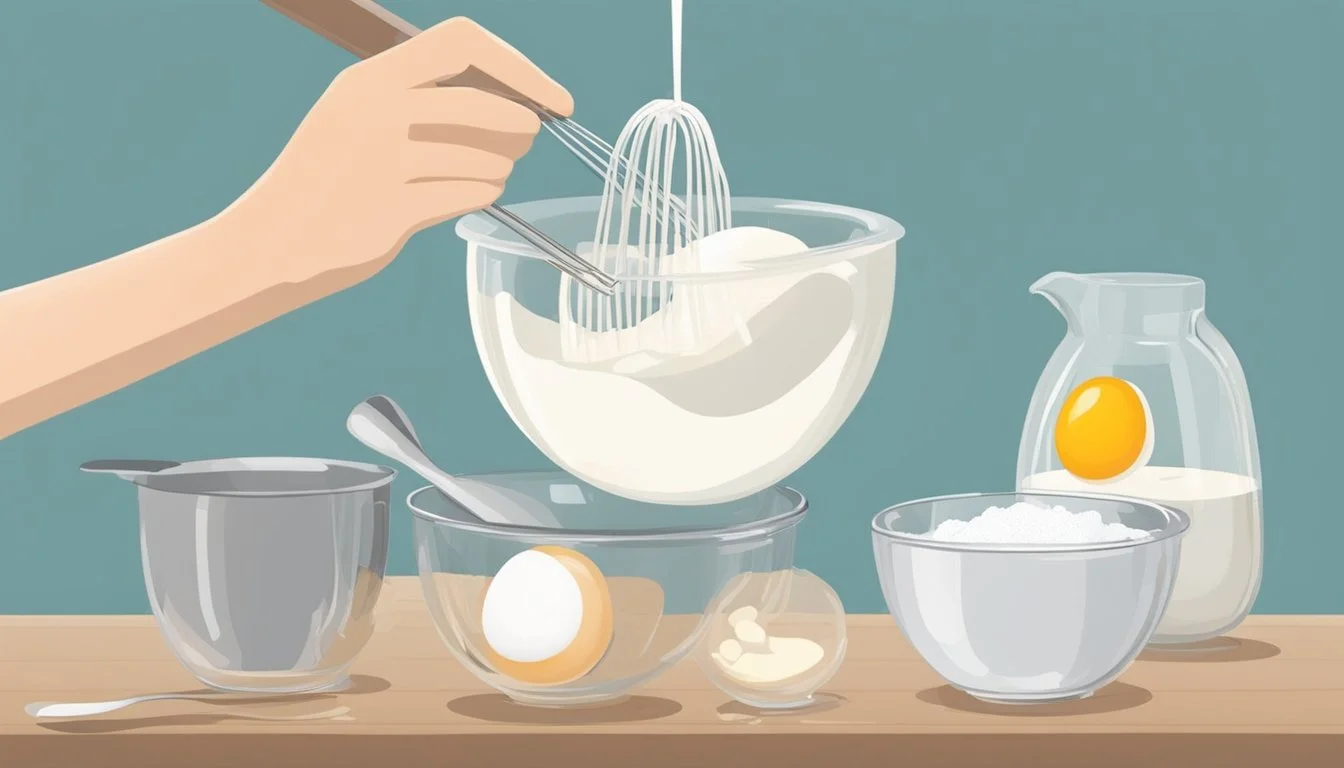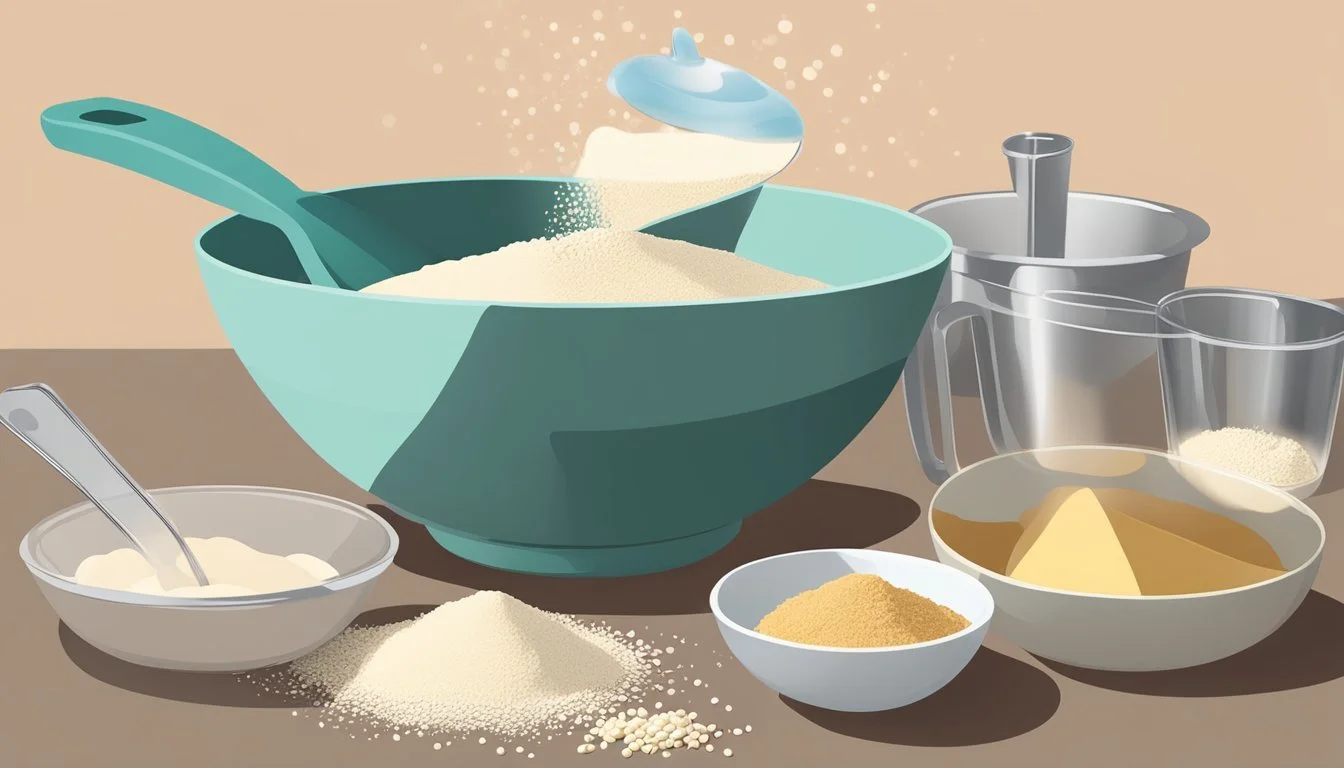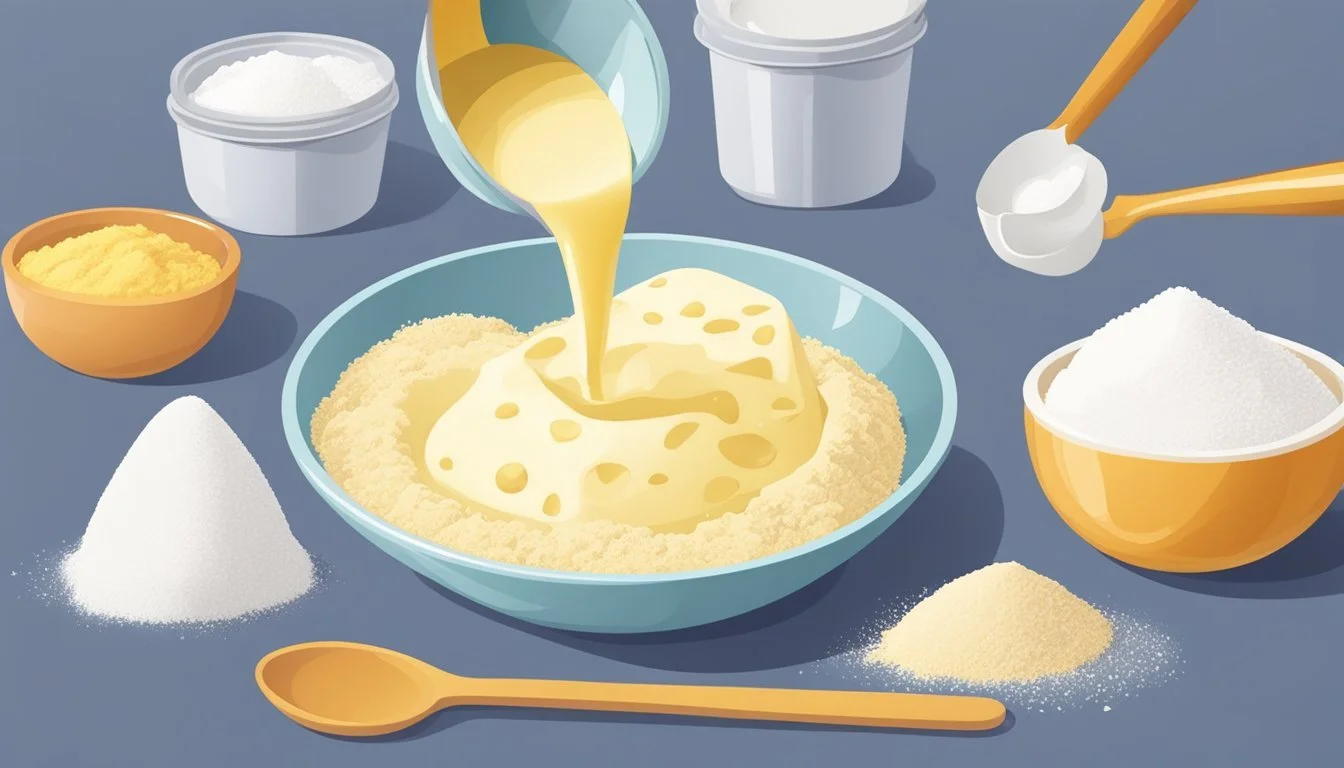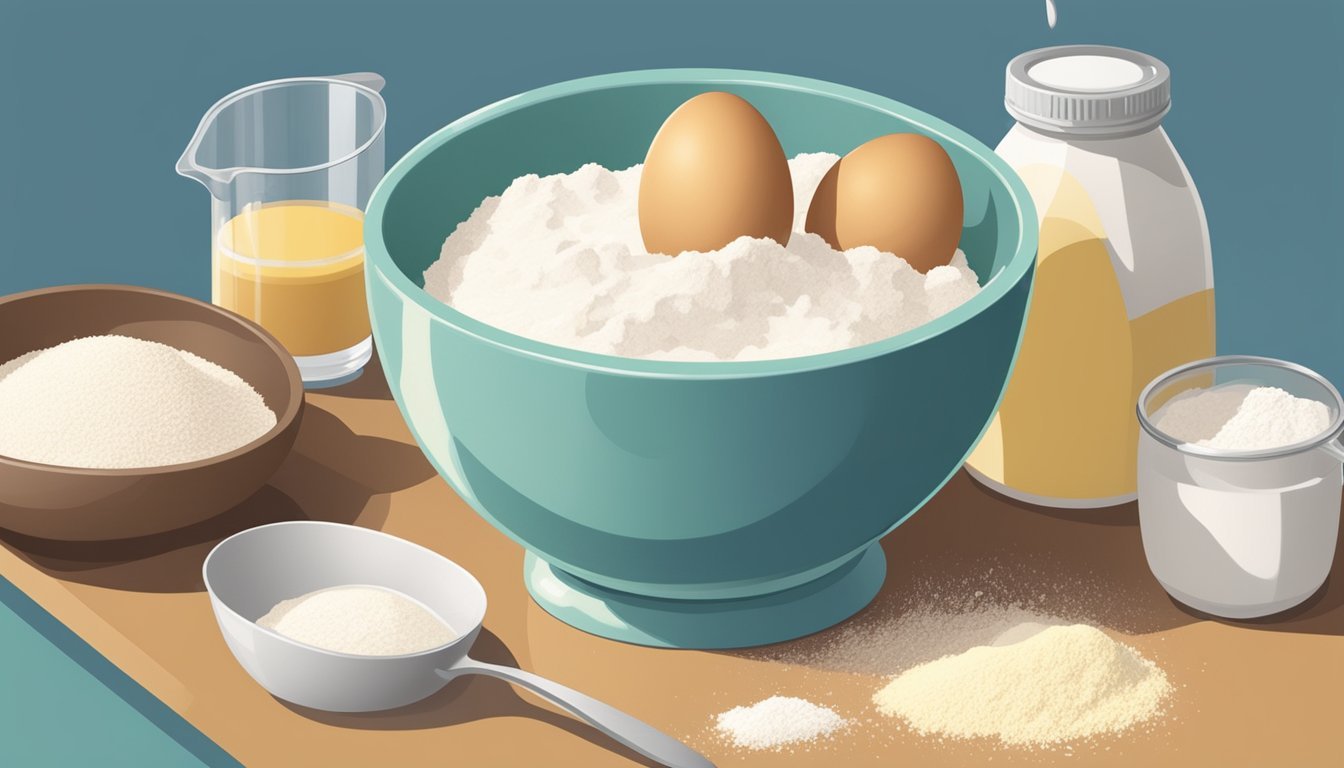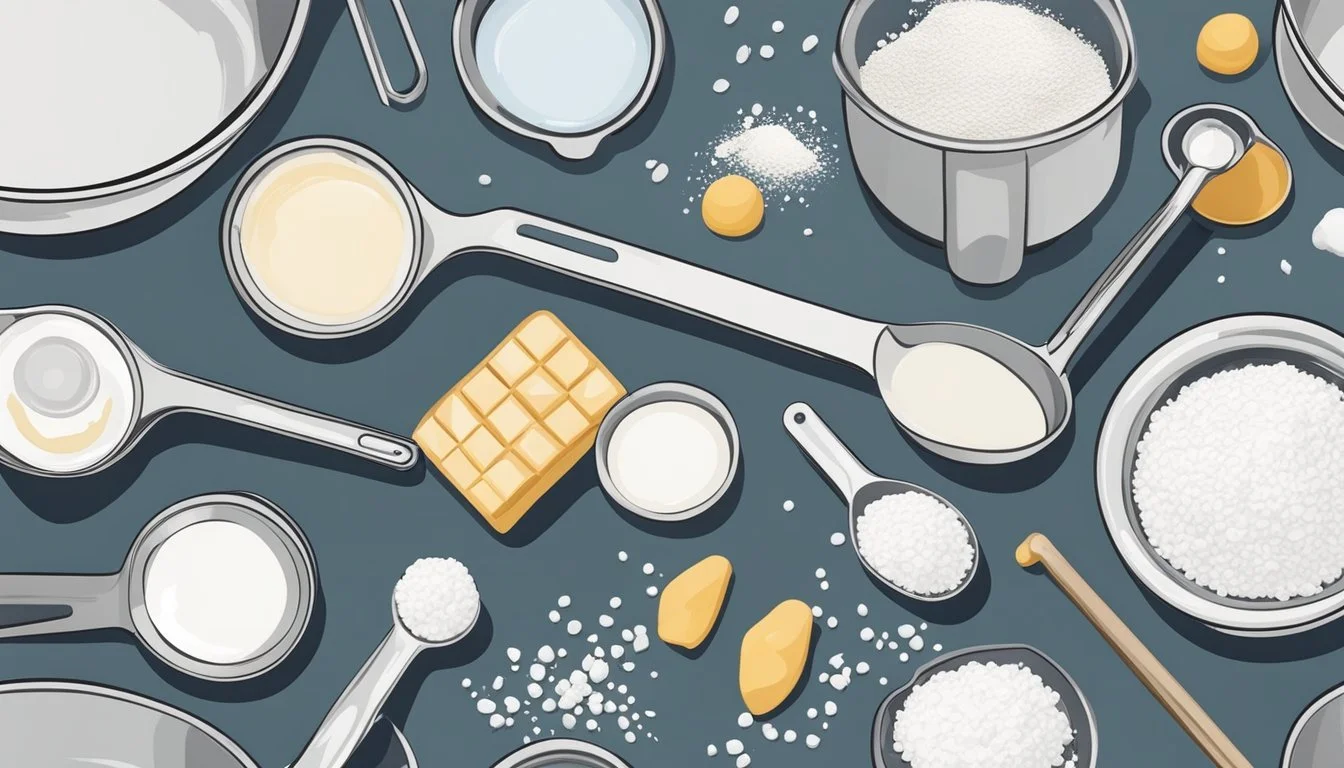How to Measure Ingredients for a Homemade Muffin Filling
Precision in Baking
Baking muffins from scratch elevates a simple pastry into a delightful homemade treat that can be enjoyed any time of day. Mastering the art of measuring ingredients is a critical step in the process, as precision ensures consistent results and optimal flavor. Whether it's a classic blueberry muffin or a chocolate chip variant, the key to delicious muffins lies in the careful balance of dry and wet ingredients.
Accurate measurement is especially crucial when preparing the filling of a muffin, as it contributes significantly to the texture and taste. Muffin fillings can range from fruit jams to rich creams, and possessing the know-how to gauge the correct amount guarantees the filling is evenly distributed, preventing the muffins from becoming soggy or overly dense. Adhering to the recipe’s specified measurements is straightforward and smooth when using standard kitchen tools like measuring cups and spoons.
While muffin recipes are indeed forgiving, understanding the nuances of how full to fill the muffin cups can transform a good muffin into a great one. When mixed and measured with care, not only do the muffins bake more evenly, but they also achieve that sought-after moist and fluffy texture. Integrating these simple measuring techniques ensures every batch of homemade muffins is quick, easy, and yields satisfying results.
Understanding Muffin Ingredients
Precision in measuring ingredients is crucial for the successful execution of a muffin recipe. Correct proportions impact the texture, flavor, and appearance of the muffins.
The Role of Flour in Muffin Batter
Flour serves as the primary structure-provider in muffin recipes. Different types offer varying protein content, which affects the final product's gluten formation. All-purpose flour is commonly used due to its moderate protein level, suitable for tender muffins. Whole wheat flour can be used for a nutritious alternative, providing a denser texture and richer flavor due to its higher fiber content.
Importance of Eggs and Fats
Eggs and fats are integral wet ingredients in a muffin recipe. Eggs contribute to structure and stability as they contain protein, which coagulates during baking, providing firmness. Fats like butter, vegetable oil, and coconut oil are responsible for moisture, richness, and tenderness. It is essential to use fats at room temperature to ensure even distribution throughout the batter.
Sweeteners and Flavorings
Sweeteners do more than just sweeten the muffins; they can also preserve moisture. Common sweeteners include granulated sugar and cinnamon, which add distinct flavors. Flavorings like vanilla extract and lemon zest infuse the batter with rich aromas, enhancing the overall taste experience.
Leavening Agents
Leavening agents are necessary for creating the desired rise in muffins. Baking powder and baking soda are the most common leaveners used. They release carbon dioxide gas when moistened and heated, causing the batter to expand and the muffins to puff up during baking.
By understanding the functions and proper measurement of each ingredient, bakers can guarantee their homemade muffin fillings will be consistently delightful.
Preparing for Baking
Before one embarks on baking, ensuring the proper preparation of equipment and the oven is crucial for muffin-making success.
Choosing the Right Muffin Pan
Selecting an appropriate muffin pan is the first step. A standard muffin pan has 12 cups, but one can also opt for a mini-muffin tin for bite-sized treats. The material of the muffin tin can affect baking time—dark metal pans typically bake faster due to better heat absorption, while silicone pans may require a longer duration. One should confirm that the size of the muffin cups corresponds with the intended muffin recipe's recommendations for both size and quantity.
Muffin Pan Material:
Dark metal: Quickens baking time
Silicone: May need extended baking time
Cup Size Options:
Standard: Common for recipes
Mini: Ideal for smaller portions
Preheating the Oven
Preheating the oven to the correct temperature is essential for consistent baking results. Most muffin recipes will require an oven temperature between 350°F to 425°F. The user should refer to the specific muffin recipe for precise oven settings. A properly preheated oven ensures a well-risen muffin with a desirable texture.
Typical Oven Temperatures for Muffins: 350°F - 425°F
Lining and Greasing
Liners can be used for muffin tins to not only ease removal but also for a quick cleanup. Paper liners are widely available and can be an easy and decorative option. If not using liners, greasing the muffin tin with butter or non-stick cooking spray is a good practice to prevent the muffins from sticking. For an eco-friendly alternative, one can lightly dust the greased cups with flour or use a piece of parchment paper or aluminum foil cut to fit.
Liner Options:
Paper liners
Aluminum foil
Parchment paper cutouts
Greasing Methods if No Liners Used:
Butter
Non-stick cooking spray
Light dusting of flour after greasing
Combining Dry Ingredients
Combining dry ingredients properly ensures a consistent muffin batter, which is crucial for the final texture and flavor of the muffins.
Measuring Flour and Leaveners
The baker must start by precisely measuring the flour using measuring cups, spooning the flour into the cup and leveling it off with a knife for accuracy. Gluten-free alternatives can be used for those with dietary restrictions, but one should be mindful of the blend and its interactions with other ingredients. Leaveners like baking powder and baking soda are essential for the proper rise of the muffins, and therefore require accurate measurement. Typically, a teaspoon is used, and it's crucial to level it off as well.
Incorporating Sugar and Spices
Sugar is measured by scooping it into a measuring cup and leveling it off. If brown sugar is used, it must be packed into the cup to ensure correct measurement. Spices, such as cinnamon, should be added with a light hand to avoid overpowering the muffins. Spices and salt are best measured using measuring spoons, ensuring they're added in appropriate amounts to complement the sweetness.
In both subsections, once each ingredient is measured, they are sifted together to distribute the leaveners, salt, and spices uniformly. This method also helps to aerate the flour and break up any lumps, leading to a more consistent muffin batter. It is important not to over-mix to prevent the formation of too much gluten, which can result in tougher muffins. The dry ingredients should be combined until just mixed, maintaining some lumps in the batter for optimal moisture retention.
Mixing Wet Ingredients
When creating a muffin filling, precise measurement and mixing of wet ingredients are crucial for a fluffy and tender batter. Achieving the right consistency begins with the preparation of eggs and liquids, followed by the incorporation of fats and extracts.
Beating Eggs and Liquids Together
Eggs should be at room temperature to ensure they blend seamlessly into the mixture. Starting with eggs, beat them gently until the yolk and white are fully integrated. Next, add liquids such as milk, buttermilk, or yogurt, depending on the recipe. Room temperature dairy products create a smoother batter and help to trap air for a lighter texture.
Adding Fats and Extracts
To maintain a tender muffin filling, carefully fold in fats like butter, oil, or coconut oil. If using butter, ensure it is melted and cooled to avoid cooking the eggs. Vanilla extract is added last to infuse flavor without overmixing, which can compromise the batter's tenderness. Mix until just combined, maintaining a gentle hand to keep the mixture light and airy.
Combining Wet and Dry Mixtures
Creating the perfect muffin batter is a simple process that leads to moist and tender results. Bakers should ensure that all wet ingredients are at room temperature before combining to facilitate easier mixing and to promote a fluffier texture in the final product.
Wet ingredients typically include:
Eggs
Liquid fat (such as oil or melted butter)
Liquid flavorings (like vanilla extract)
When preparing dry ingredients, one should:
Sift flour and raising agents to incorporate air
Whisk together to ensure even distribution
To combine, start by creating a well in the center of the dry ingredients. Pour the wet mixture into this well. The key is to mix gently and slowly. Using a spatula, fold the dry ingredients into the wet, scraping around the edge and then through the middle of the bowl.
Important Tips:
Mix until just combined; over-mixing can result in tough muffins.
Some small lumps in the batter are acceptable; they indicate minimal mixing, which is often desired for tender muffins.
Avoid deflating the batter to keep the muffins light.
Properly mixing wet and dry ingredients is crucial for muffin batter that is not only easy to make but also yields the best texture and flavor.
Customizing Your Muffins
When crafting homemade muffins, the beauty lies in personalization. Here's how to integrate flavorful fruits and nuts, explore both sweet and savory mix-ins, and create an irresistible crumbly topping to make each muffin recipe uniquely delectable.
Integrating Fruits and Nuts
Fruits and nuts offer texture and bursts of flavor. For fruit, both fresh and frozen blueberries or raspberries are excellent choices. They should be gently folded into the batter to prevent crushing or bleeding of colors. Similarly, when using stone fruits like peaches, one should ensure they are diced to uniform, bite-size pieces for even distribution.
For nuts, the baker has a variety of options. Common choices include:
Walnuts (chopped)
Almonds (slivered or chopped)
Pecans (chopped)
Nuts can be toasted beforehand to enhance their flavor and crunch within the muffins.
Exploring Sweet and Savory Mix-ins
Venturing into the realm of sweet and savory mix-ins allows a cook to transform a simple muffin into a gourmet treat. For a sweet twist, consider adding chocolate chips or a dash of spices like cinnamon or nutmeg. These ingredients should be measured and mixed with the dry ingredients to prevent them from sinking to the bottom during baking.
On the savory side, bakers can incorporate cheddar cheese, ham, and a touch of black pepper. These ingredients should be diced finely and mixed into the batter last to maintain their distinct flavors.
Creating a Crumbly Topping
A crumbly topping adds texture and visual appeal. To create a simple, yet effective topping, one could combine:
Oats (rolled or quick)
Brown sugar
Butter (cold and diced)
Optional: additional spices or nuts
The ingredients should be mixed until they resemble coarse breadcrumbs and then sprinkled over each muffin before baking. This adds a delightful crunch and sweetness to each bite.
Incorporating these elements transforms a basic muffin into an array of flavor profiles, from tangy fruit notes to rich, savory bites, with a tactile play of crumbly toppings that excite the palate.
Filling the Muffin Cups
Filling muffin cups with batter requires precision for even baking and perfect results. An ice cream scoop or spring-loaded scoop is recommended for its ease of use and consistent size. Typically, one scoop of batter is sufficient for a standard muffin cup. If a scoop is not available, a measuring cup or spoon can be used to ensure equal distribution.
To prevent the muffing tops from spilling over the brim, fill each muffin cup approximately ⅔ full. This allows the batter adequate space to rise without overflowing during baking. The table below summarizes the recommended fill levels:
Muffin Tin Size Batter Amount Standard ¼ to ⅓ cup Mini 1 tablespoon Jumbo ⅔ to ¾ cup
One should always refer to the muffin recipe for specific instructions as batter consistency may vary. For muffin recipes that are easy to make, it is often suggested to use tools that aid in simple processes, like a scoop for batter transfer.
After placing the batter into the cups, use a clean finger or a small spatula to level the top, ensuring a uniform bake. It is also beneficial for bakers to consider greasing the muffin cups or using liners for an easy release after baking.
In summary, when filling muffin cups, attention to detail will yield the best results—use the right tool for consistent sizing, fill to the correct level, and prepare the cups adequately based on the type of muffin being made.
Baking and Checking Doneness
Proper measurement and preparation set the foundation for delicious muffins, but baking and ensuring doneness are crucial final steps. One aims to achieve muffins that are both moist and fluffy. Precision in oven temperature and awareness during baking time are essential.
Setting the Timer
Before placing the muffin tray in the oven, it is imperative to preheat the oven to the recipe's specified temperature. Once the muffins are in, the timer should be set according to the recipe's instructions, typically ranging from 15 to 25 minutes for standard muffins. However, factors such as oven calibration and the size of the muffins can affect the exact timing.
Oven Temperature: Preheat and bake at the temperature stated in the recipe.
Baking Time: Set the initial timer for the shortest time recommended and be prepared to add time as needed.
Testing with a Toothpick
The toothpick test is a reliable method to check for doneness. At the end of the baking time, one should insert a toothpick into the center of a muffin. The muffins are done if the toothpick comes out with a few crumbs or clean, indicating a moist interior without being undercooked.
Toothpick Cleanliness: Few crumbs or clear – muffins are done.
Moist muffins: The moistness should not be mistaken for uncooked batter.
By adhering to these steps, one can consistently produce perfectly baked muffins.
Cooling and Storing Muffins
Proper cooling and storage techniques are essential for maintaining the homemade muffins' taste and texture, whether they're for breakfast or a snack.
Using a Wire Rack
When muffins come out of the oven, they should be transferred to a wire rack for cooling. Cooling is crucial as it stops the baking process and prevents the muffins from becoming soggy from steam. Muffins should be left in the pan for a few minutes to settle their structure, then removed and placed on a wire rack. This allows air to circulate around each muffin, cooling them efficiently and thoroughly.
Saving Muffins for Later
For those who want to enjoy their muffins beyond the day of baking, the right storage method ensures they remain delicious.
Room Temperature: Muffins can be stored at room temperature in an airtight container. To minimize moisture, place a paper towel at the bottom and top of the container before sealing it to keep the muffins fresh.
Refrigerator: If storing muffins in the refrigerator, ensure they are completely cooled. Line the storage container with a paper towel, place muffins inside in a single layer, and seal with a lid. Muffins will stay fresh in the refrigerator for 4-5 days.
Freezer: For long-term storage, place homemade muffins in a single layer inside a freezer bag, ensuring all air is removed before sealing. They can be kept in the freezer for up to three months. When ready to eat, one can simply thaw them at room temperature or use a microwave for quick reheating.
Health and Nutrition Considerations
When preparing homemade muffin fillings, it is important to consider both the nutrition content and how the recipe can be adapted to suit various dietary needs.
Understanding Muffin Nutrition Facts
Muffins can be a nutritious breakfast food, but their health value largely depends on the ingredients. A typical muffin contains carbohydrates, protein, and fat, which are essential macronutrients. The nutritional profile of a muffin can vary, especially in terms of its saturated fat and carbohydrate content. To provide clarity, one may analyze the nutrition facts of their recipe, which can inform decisions about ingredient substitutions and portion sizes. A nutrition facts label, if generated, typically includes:
Calories: Total energy provided per serving.
Carbohydrates: Should offer a balance with complex carbs for sustained energy.
Protein: Essential for muscle repair and overall health.
Fat: A focus on healthy fats, while moderating saturated fats, enhances nutritional value.
Sodium: Often lower in homemade versions compared to store-bought.
Fiber: Whole-grain and fruit ingredients can boost fiber content.
Accommodating Dietary Restrictions
For individuals with specific dietary restrictions, adjustments to the standard muffin recipe may be necessary. Here are some considerations:
Gluten-free: Substitute wheat flour with almond, rice, or coconut flour for those with gluten intolerance.
Low carbohydrate: Reduce sugar and swap out high-carb flours for lower-carb alternatives.
Dairy-free: Use plant-based milk and oils instead of butter and cow's milk.
Protein-rich: Incorporate protein powders or additional eggs to increase protein content, which is particularly important for those aiming to build muscle or who require more protein in their diets.
Utilizing room temperature ingredients can also improve the texture and consistency, ensuring even distribution of nutrients throughout the muffin. Family health can benefit from these homemade adaptations by reducing intake of processed foods and allowing for customized nutrition approaches.
Serving and Enjoying Muffins
When serving muffins, whether they are lemon blueberry, classic blueberry, or cheese-filled varieties, presentation and accompaniments can enhance the experience. Muffins are versatile – perfect for a family breakfast or as a snack throughout the day. It's important to serve them in a way that highlights their delicious qualities and the effort put into following that easy muffin recipe.
Breakfast: For a delightful breakfast, muffins can be served warm. Heating them slightly in an oven or microwave releases their aroma and softens their crumb. Pair them with a protein like scrambled eggs or Greek yogurt to balance the meal.
Warmth: Heat muffins for 10-15 seconds in the microwave
Pairing: Add protein to make a balanced breakfast
Snack Time: As snacks, muffins offer a quick and easy solution. They can be packed in school lunches or enjoyed at work. For a more indulgent treat, muffins can be sliced in half and spread with butter or a dollop of cream cheese.
On-the-Go: Wrap muffins individually for easy transport
Spread: Butter or cream cheese complement the muffin flavors
Family Serving Tips:
Personal Touch: Serve muffins on a platter with a variety of toppings.
Textures: Include crunchy elements like nuts or seeds to contrast the soft muffin texture.
For lemon blueberry or blueberry muffins, a citrus glaze drizzled on top just before serving adds a tangy note. Cheese muffins might be garnished with a sprinkle of fresh herbs for added flair.
Remember, muffins are best enjoyed when fresh, but they can also be stored in an airtight container to retain moisture and taste for later consumption. Enjoying muffins is about more than just taste; it's about the experience of sharing handmade treats with loved ones.





